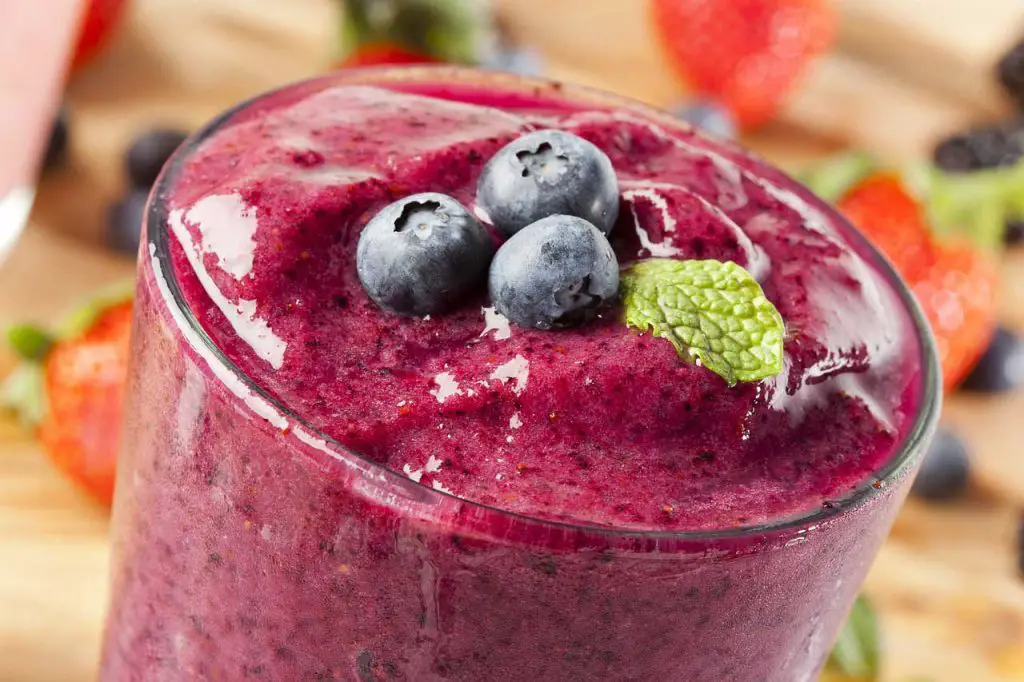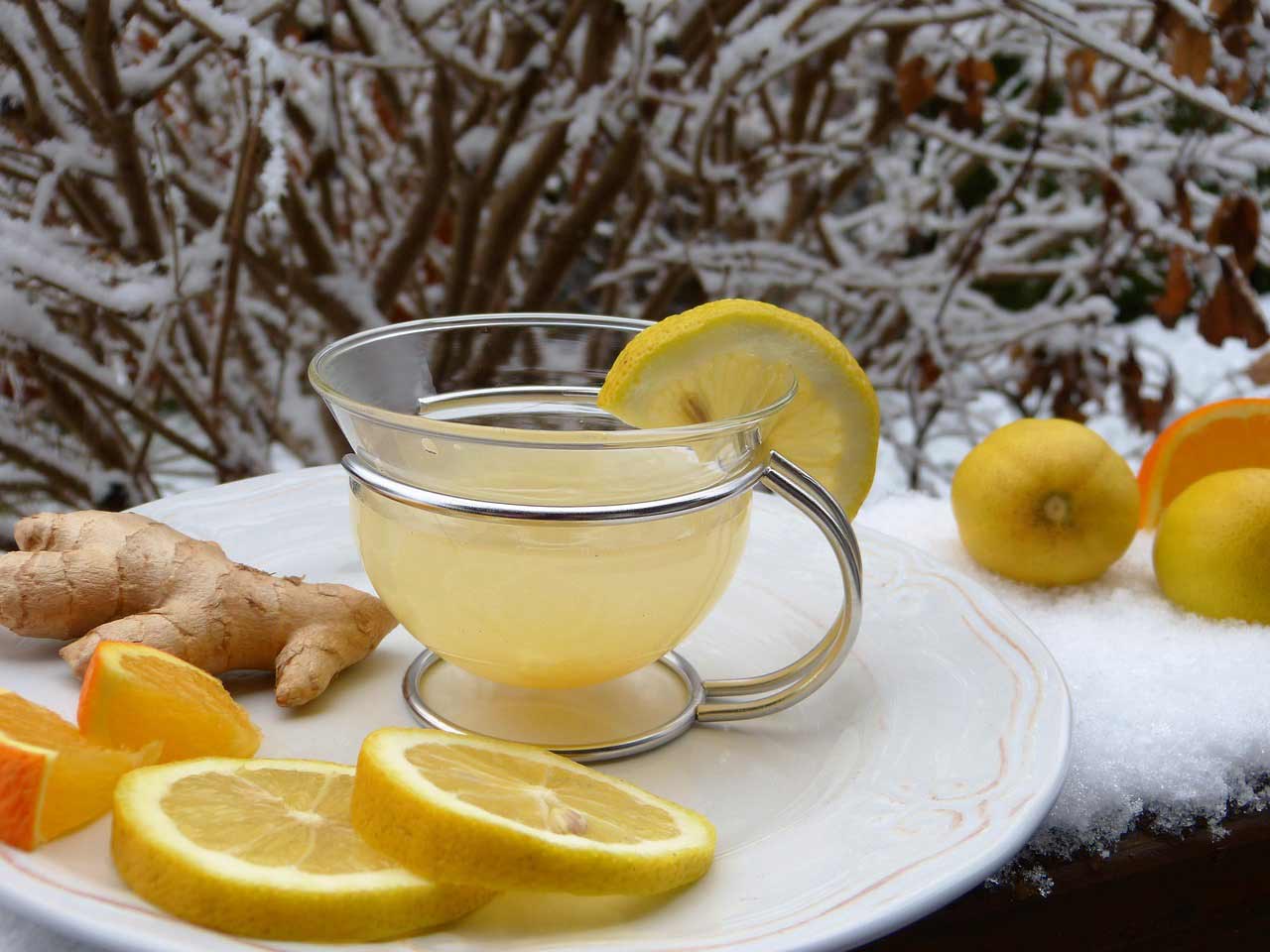How Much Fiber is in Prune Juice? “A Nutritional Insight” delves into the fascinating world of dietary fiber present in this popular beverage. Prune juice, a popular beverage in many health-conscious homes, receives praise for facilitating regularity and improving digestion.
Beyond its well-known advantages, though, how does its fiber content stack up against those of other food sources? This article examines the nutritional profile of prune juice, its fiber content, and its potential health effects.
To give you a thorough understanding of its position in the fiber spectrum, we will also make comparisons with whole prunes and other fruits. Knowing how much fiber is in prune juice is a good start, whether your goals are to reduce weight, repair your digestive system, or just learn more about the nutritional makeup of your food.
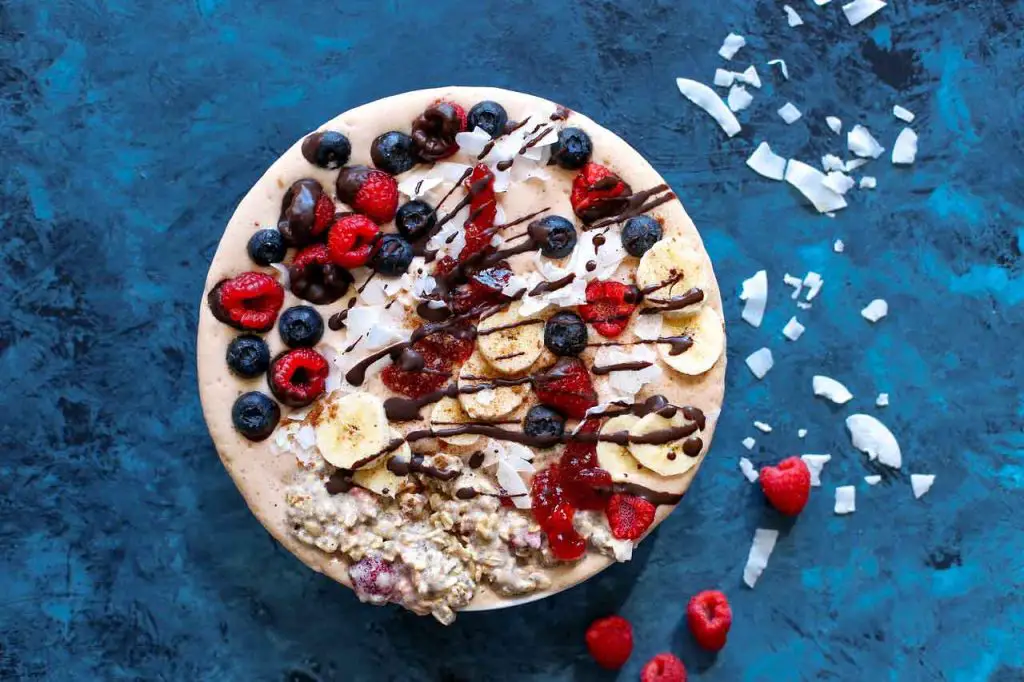
Introduction to Prune Juice and Its Nutritional Profile
Dried plums, or prunes, are the source of prune juice, which is notable for both its distinct flavor and its outstanding nutritional makeup. Prune juice, well known for its advantages to digestive health, especially in relieving constipation, is a nutritional powerhouse that provides more than simply comfort.
This drink is a great complement to a balanced diet since it is full of vitamins, minerals, antioxidants, and dietary fiber. Prune juice’s nutritional components boost heart health and bone density, among other aspects of general health, in addition to its well-known digestive assistance properties.
In this introduction, we explore the nutritional landscape of prune juice, revealing the specifics that make this beverage an essential addition to your nutritional toolkit.
Nutritional Profile of Prune Juice (Per 8 ounces / 240 ml):
| Nutrient | Amount | % Daily Value (DV)* |
|---|---|---|
| Calories | 182 kcal | – |
| Total Fat | 0.2 g | <1% |
| Saturated Fat | 0 g | 0% |
| Cholesterol | 0 mg | 0% |
| Sodium | 10 mg | <1% |
| Total Carbohydrates | 45 g | 15% |
| Dietary Fiber | 2.6 g | 10% |
| Sugars | 42 g | – |
| Protein | 1.5 g | 3% |
| Vitamin C | 10% DV | – |
| Calcium | 2% DV | – |
| Iron | 4% DV | – |
| Potassium | 707 mg (15% DV) | – |
| Vitamin K | 57.8 µg (48% DV) | – |
| Magnesium | 36 mg (9% DV) | – |
*% Daily Values are based on a 2,000-calorie diet. Your daily values may be higher or lower depending on your calorie needs.
This table provides an overview of the various types and levels of nutrients found in prune juice. Given its high potassium, vitamin K, and dietary fiber content, it makes sense to commend this juice for its health benefits. Because of the quick energy boost that comes from its naturally occurring sugars, it’s a fantastic choice for a midday snack or a post-workout beverage.
Whether your objective is to improve the health of your digestive system, increase the quantity of nutrients you ingest, or simply enjoy a tasty and nutritious beverage, prunes provide several health benefits that may help you live a healthier lifestyle.
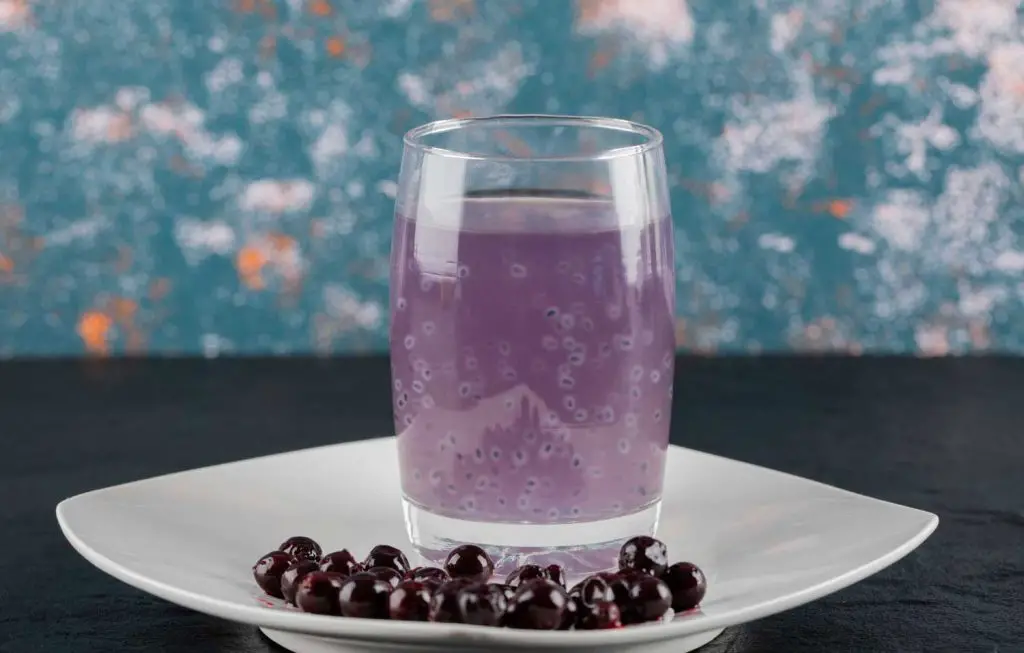
The Health Benefits of Fiber in Prune Juice
Prune juice, or dried plum juice, is known for its digestive benefits and dietary fiber. It promotes regular bowel movements and prevents constipation, as it is high in both soluble and insoluble fibers. Prune juice’s soluble fiber can lower cholesterol, safeguarding the heart by binding to cholesterol particles in the digestive system and removing them before absorption.
Studies have linked the consumption of high-fiber meals and beverages, such as prune juice, to a decreased risk of developing chronic diseases like type 2 diabetes and heart disease.
Prunes’ high soluble fiber content may improve insulin sensitivity, lower blood sugar, and lower diabetes risk. High-fiber foods and beverages can help maintain or prevent weight gain by reducing calorie intake and prolonging feelings of fullness.
Prunes’ dietary fiber also benefits the digestive system, supporting a healthy microbiome and promoting happiness, strong immunity, and efficient digestion. Fiber maintains a healthy microbiome by feeding good bacteria in the stomach and acting as a prebiotic.
In summary, prune juice offers numerous health benefits, including improved digestive health, a decreased risk of chronic diseases, weight control assistance, and support for a healthy gut. You can enjoy it on its own or combine it with other foods and smoothies, making it a versatile and nutrient-dense option.
Understanding the Fiber Content in Prune Juice
Below is a sample table layout that could be used:
| Nutritional Component | Amount per 8 oz Serving of Prune Juice | Daily Recommended Intake* |
|---|---|---|
| Dietary Fiber | X g | 25-38 g |
| Sugars | X g | Not specified |
| Calories | X kcal | 2000-2500 kcal |
| Vitamin C | X mg | 65-90 mg |
| Potassium | X mg | 4700 mg |
| Sodium | X mg | <2300 mg |
* Daily Recommended Intake values are based on general dietary guidelines and may vary based on age, gender, and health conditions.
Note: The placeholder “X” should be replaced with specific values based on the nutritional information of the prune juice brand or type you are referencing. This table structure provides a clear and concise way to understand the nutritional value of prune juice, especially focusing on its fiber content, in the context of a balanced diet.
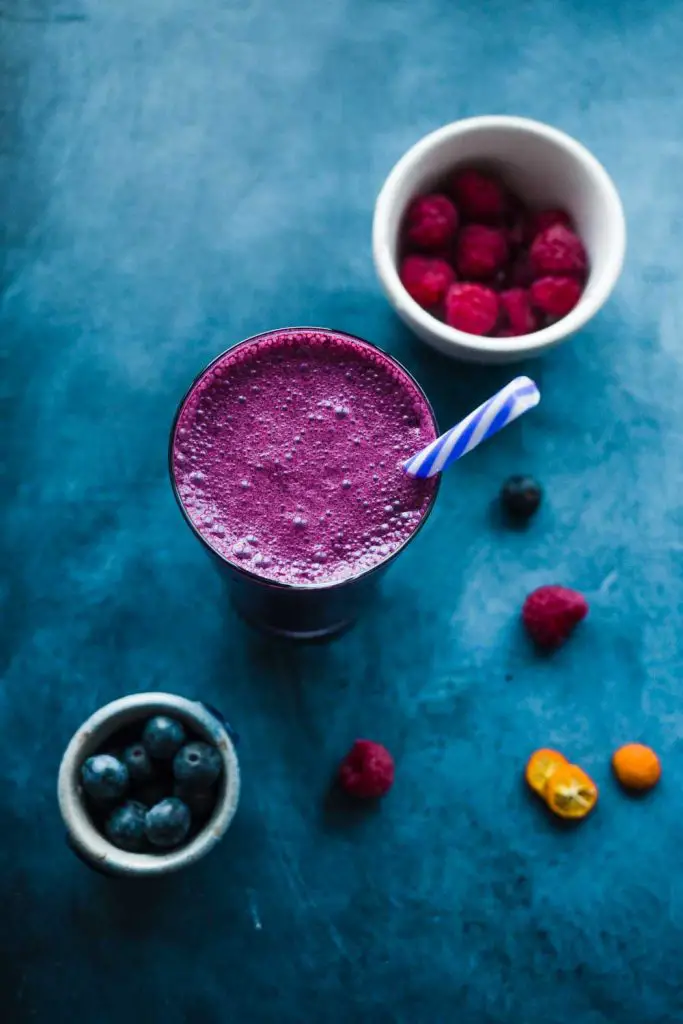
How to Incorporate Prune Juice into Your Diet for Optimal Fiber Intake
Pruning juice may be an easy and delicious way to get more fiber in your diet. Fiber has several health benefits, including improved heart and digestive health. Prune juice, also known as dried plum juice, is rich in dietary fiber and essential vitamins and minerals. Here’s how to include the most fiber in your daily routine using prune juice.
Get your day off to a good start.
To start the day, pour yourself a small glass of prune juice. It’s a delicious way to start the day because of its rich flavor and natural sweetness. You might try diluting it with water or adding it to a fruit smoothie if you feel that it tastes too powerful. Pruning juice may be a nutritious morning option when combined with other fruits that are high in fiber, such as bananas or berries.
Creative Cooking
Prune juice is also helpful in many culinary applications. Use it as the basis for marinades, sauces, and salad dressings to add a touch of sweetness and depth to your dishes. It’s a natural sweetness and acidity can enhance your food’s taste profile and nutritional value.
healthy munchies
For a noon boost, you might even try making a smoothie with prune juice. Pair prune juice with yogurt, a few handfuls of spinach, and your favorite fruits for a filling, high-fiber snack. This helps you meet your daily fiber requirements and keeps you satisfied until your next meal.
Boost Your Dessert Recipes
For an unexpected twist, try incorporating prune juice into your desserts. Prunes can be used to make jelly, moisten cakes, or sweeten oatmeal bars. Its natural sugar content is a healthier alternative to refined sugar, adding more nutritious value to your sweet treats.
Water consumption and digestion
If you are specifically looking to improve your digestion, you might find it helpful to consume a glass of prune juice before bed. Prunes contain sorbitol, a naturally occurring sugar alcohol with a laxative effect that promotes bowel motions and helps prevent constipation. It’s a gentle way to maintain gut health.
Quantity and equilibrium
Despite its benefits, you should only use prune juice in moderation. It’s advised to keep your consumption to 4–8 ounces per day because of its high natural sugar content and calories, especially if you’re attempting to manage your weight or blood sugar levels.
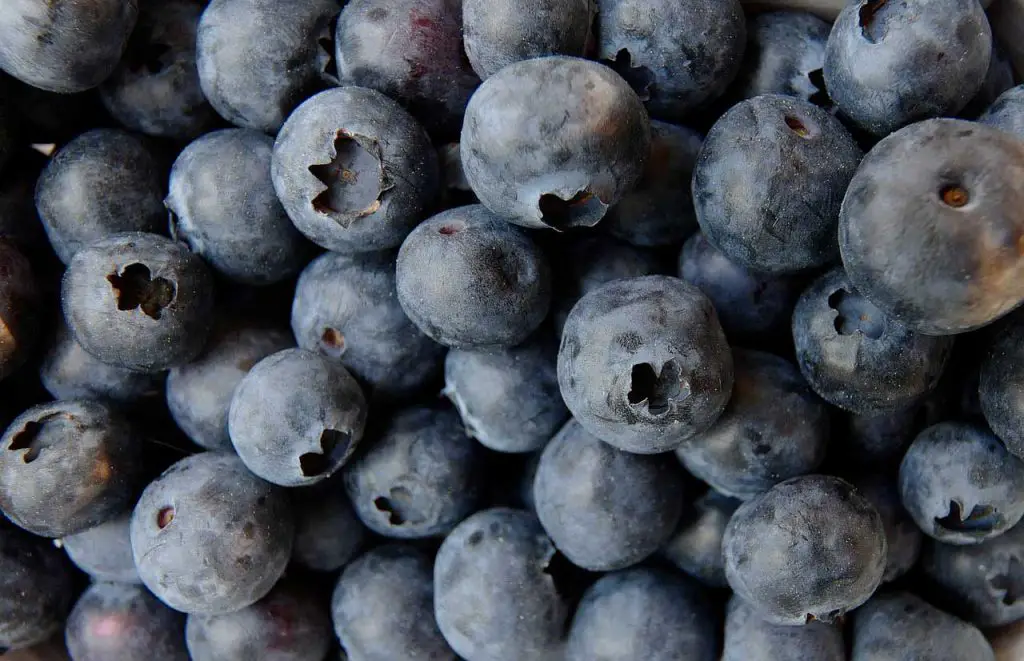
Comparing Fiber: Prune Juice vs. Whole Prunes
Let’s structure a comparison table focusing on various nutritional aspects that differentiate prune juice from whole prunes, particularly emphasizing fiber content.
This table will also cover calories, sugar content, vitamins, and minerals, offering a comprehensive nutritional profile of each.
| Nutritional Aspect | Prune Juice (1 cup) | Whole Prunes (1 cup, pitted) |
|---|---|---|
| Calories | Approximately 180 kcal | Approximately 408 kcal |
| Fiber | 2.6 grams | 12.4 grams |
| Sugar | 42 grams | 66 grams |
| Vitamins and Minerals | Contains potassium, Vitamin K, and small amounts of B vitamins | Higher in potassium, Vitamin K, B vitamins, and also provides Vitamin A |
| Serving Size | 8 ounces (237 ml) | 174 grams |
| Health Benefits | Hydration, some digestive benefits due to the presence of sorbitol and fiber | Higher in potassium, Vitamin K, and B vitamins, and also provides Vitamin A |
| Glycemic Index | Higher due to liquid form and faster absorption | Lower, thanks to the fiber content slowing down sugar absorption |
This table demonstrates the notable variations between prune juice and whole prunes, especially about fiber content, which is significantly higher in whole prunes.
Whole prunes are a superior alternative for individuals trying to boost their fiber intake because of their increased fiber content, which also helps to improve digestive health and slow down the absorption of sugar.
Because prune juice is liquid and absorbs more quickly, it has a higher glycemic index and less fiber than other options, but it is still more hydrated and provides some nutritional advantages.
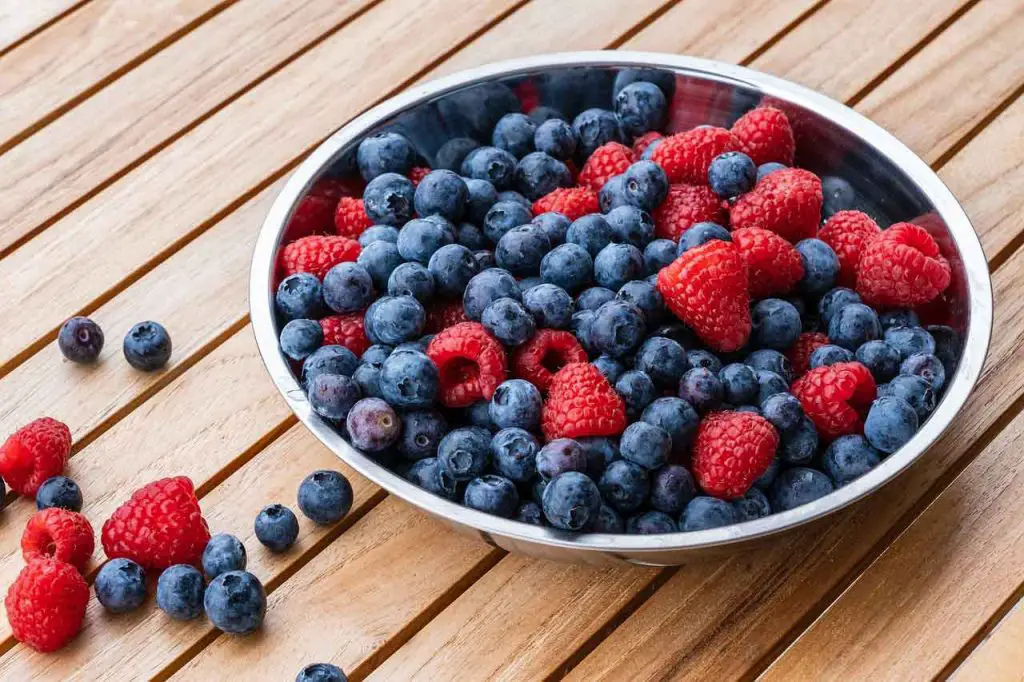
This website offers easily readable materials and expert nutritional guidance on a variety of foods, including the advantages of high-fiber foods like prunes.
eatright.org
Conclusion
In conclusion, whole prunes prevail when compared to prune juice, especially when it comes to fiber consumption. Whole prunes have a far greater fiber content and, because of their low glycemic index, help to improve digestion by releasing sugars into the circulation more slowly. This makes them a very advantageous option for people trying to control their blood sugar levels, enhance the health of their digestive systems, or just consume more dietary fiber.
Despite still providing some nutritional advantages, such as modest amounts of vitamins and minerals and hydration, prune juice lacks fiber and, since it is liquid, has a higher glycemic index. As such, it might not be the best choice for people who are trying to increase their consumption of fiber or who are controlling their blood sugar levels.
Ultimately, when choosing between prune juice and whole prunes, one should consider dietary requirements, personal preferences, and health objectives. Whole prunes are a better option for people who prioritize a high-fiber diet. Even though prune juice has fewer advantages in terms of fiber, it could still be a good choice for people seeking a nourishing and hydrating beverage.

Je m’appelle Gunther Adam et je suis ravi de partager avec vous le monde des saveurs vibrantes, de la vie saine et de l’art du goût. Learn More

